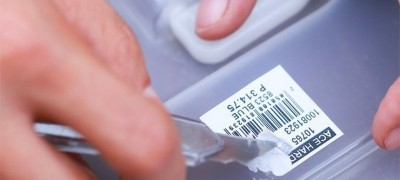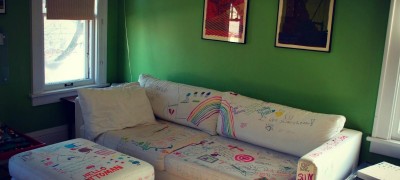Rules and features for cleaning and washing tiles in the bathroom
The active use of various pieces of furniture leads to the appearance of dirt. Especially the surfaces of tables, walls or floors are susceptible to this. Water and dirt often get on the tiles, which stimulates the growth of mold and mildew. Consider how to clean the bathroom tiles on your own using various means.
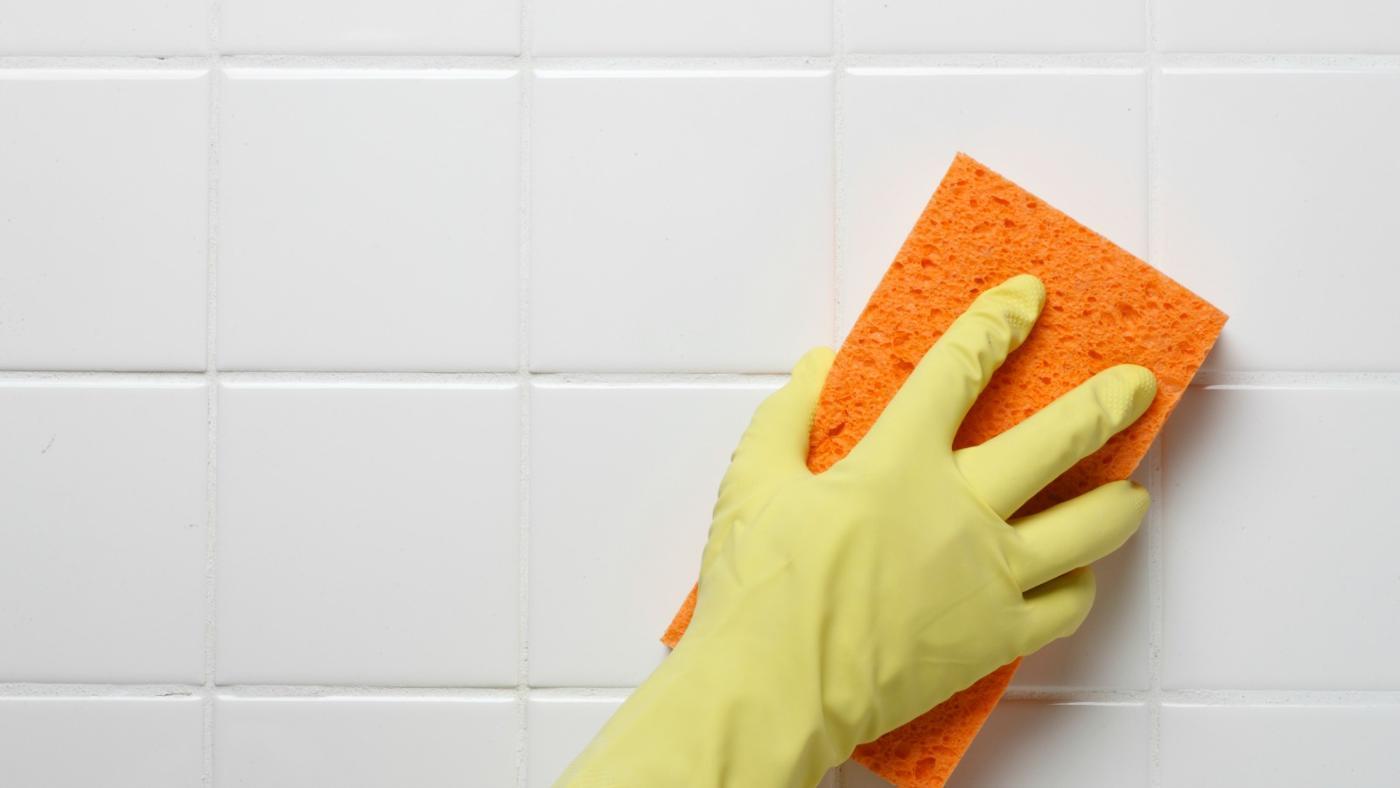
- Why plaque forms
- How to clean bathroom tiles with household chemicals
- Washing tiles with folk remedies
- Features of washing tiles, depending on the coating
- How to clean the joints between tiles
- Mold Removal Features
- How to clean tiles after renovation
- Preventive recommendations against mold growth
- Video: how to clean bathroom tiles
Why plaque forms
In order to effectively eliminate pollution, you need to deal with the cause of the occurrence. First of all, it should be borne in mind that the tiles in the bathroom or kitchen are highly susceptible to moisture, soap and chemicals, which negatively affects any surface. Liquids settle on the tile and when they evaporate, a deposit of salts and lime is formed.
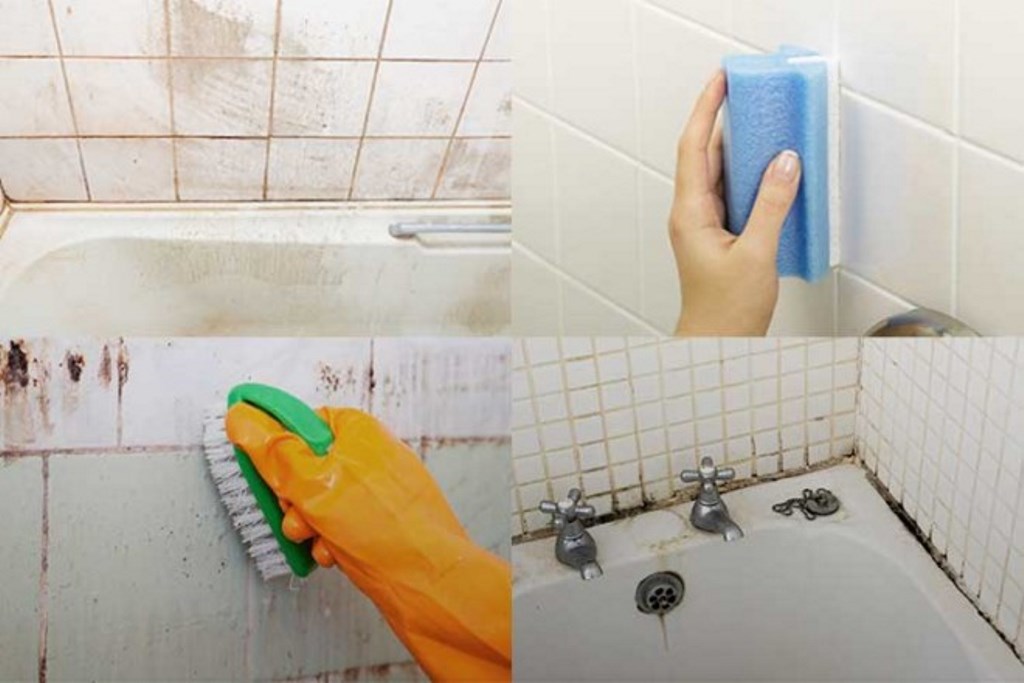
It is easy to clean the tiles in the bathroom from limescale, just wipe it with a wet and then dry cloth. But there are times when more complex spots are formed, which can be caused by:
- Too much hard water. Usually there are not so many impurities in it, but with increased rigidity, the amount of harmful elements increases significantly;
- Rust. In this case, the oxidized metals in the pipes settle on the walls in the form of yellowness or reddish bloom;
- Soap solutions and excessive moisture, which accelerate the growth of fungi that form dark spots.

Repairs may also contribute to pollution. Particles of lime, paint or putty mixture harden on the surface and become difficult to remove.
How to clean bathroom tiles with household chemicals
Aggressive chemicals can quickly and effectively remove almost any contamination. In order not to harm the surface, you need to use these substances correctly. Consider some rules that will help you clean the tiles quickly and without harmful consequences.

Rules for cleaning tiles with specialized chemicals
Manufacturers have presented a wide range of different products that quickly and effectively remove almost any stains and odors. They can be sorted into compositions for ceramic and earthenware products, this is very important, since there are some substances that are not suitable for a particular variety.

The most commonly used tools are:
- Domestos. It is a fairly thick gel with antibacterial action. The composition includes sodium hypochlorite, which effectively fights lime and mold.For cleaning, four caps for five liters of water will be enough;
- Cillit Bang. It is better to choose an anti-plaque one, since it not only effectively removes dirt, but also gives shine and color, has a regenerating effect and creates a protective film;
- Kraft Zwerg. Looks like an emulsion, the same action as the previous one;
- Luxus Professional. It is a safe and environmentally friendly spray formulation. Does not leave a film, can be easily washed off with warm water. Fights easily even with fat;
- Mellerud. Can be used not only for tiles, but also for natural stone. The composition includes phosphoric acid;
- HG. Used for glossy surfaces, as it allows you to add streak-free shine;
- Kiilto Clean. The composition includes oxalic acid, which effectively fights against lime and cement;
- Multi fresh. A good enough composition that quickly and effectively removes stains and mildew;
- Sani clean super. Suitable only for those surfaces that are resistant to sufficiently aggressive acids;
- Sanitol. Fights tiles salts, soap deposits;
- SANITA in the form of a gel. Perfect for removing rust and adding shine;
- Chistin in the form of a gel. An antibacterial agent that is suitable for all surfaces;
- Kenolux S100. The composition includes lactic acid, which makes the product absolutely safe for seams;
- Mr. Proper. It is liquid in consistency, it allows you to remove even the oldest stains.
Note! Chemicals are quite aggressive, so you need to use them carefully and in the required amount so that there are no problems with the surface and no adverse effect on human health.
Chemical compositions allow you to quickly and effectively eliminate not only dirt, but also harmful microorganisms, while imparting a pleasant aroma of flowers or fruits.
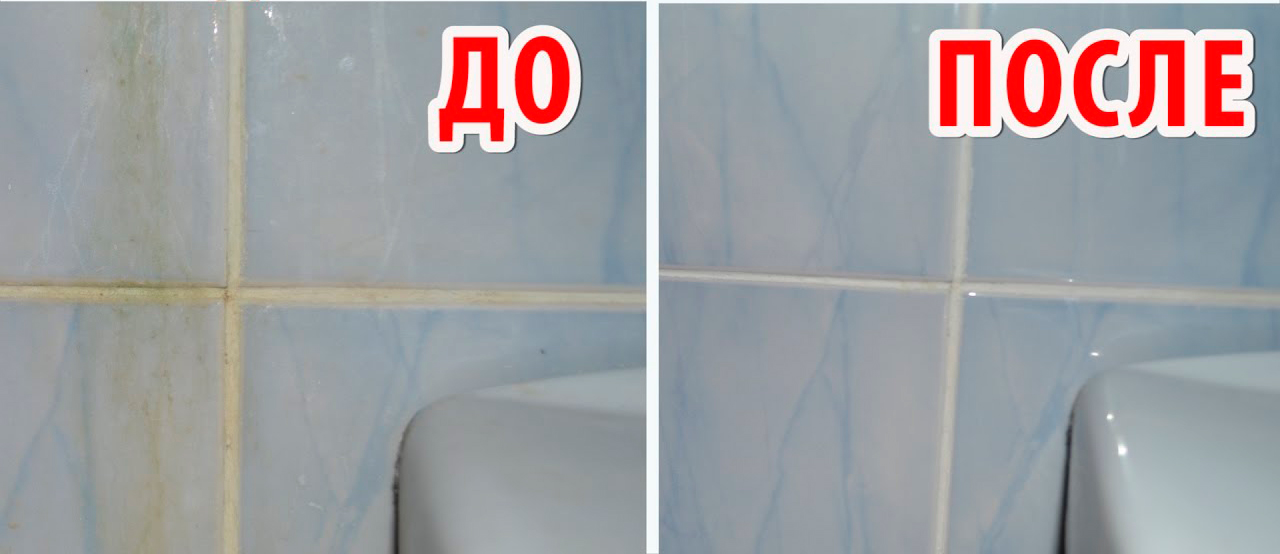
Washing tiles with folk remedies
Sometimes the use of ready-made chemicals is impossible or undesirable. This may be due to their high price tag. The use of chemicals in the house where a small child lives is not recommended, so it is worth resorting to other substances.

How to clean the tiles in the bathroom or kitchen from available tools? Let's take a closer look.
- Laundry soap. Allows you to wash off yellow plaque and whiten tiles. To do this, you need to grate the soap and add a little water so that you get a thick mass. It is applied to the surface and left for half an hour, after which it is washed off with warm water and wiped off with a dry cloth;
- Vinegar. It needs to be poured into a spray bottle, as this will simplify the work. Sprinkle on the tiles and let sit for half an hour. More effective action can be achieved by adding salt. The ratio of salt to vinegar should be 1: 1. For prevention, it is worth regularly sprinkling the tiles;
- Soda. It is effective against grease, rust and mold. Moisten the surface before applying the baking soda. Using a sponge, the agent is rubbed into the places of contamination and left for fifteen minutes. Then it must be washed off with warm water. If you are cleaning glossy tiles, then it is better to give preference to soda ash;
- Hydrogen peroxide. Better to take 3%, as it is much more effective, even removes paint and makes the seams clean and white.
- Ammonia. A one-component solution does not handle dirt, but can be diluted with water.
- Lemon juice or citric acid. It softens plaque and whitens stains. Pour the acid onto a slightly wet sponge and wipe the metlakh tiles.
Important! Do not use crystallized acid on glossy surfaces, as it can leave scratches. Therefore, it is better to choose lemon juice or pre-dissolve the crystals in water.
- Tea tree oil.It has an antibacterial effect and removes fungi. It can be used as a one-component composition, and in combination with other compositions. It is best to clean the tiles with a soft sponge.
- Powder for cleaning teeth. To do this, you need to take two tablespoons of powder and one teaspoon of ammonia.
Note! Despite the fact that these substances are safe for human health, they should only be used with gloves.
It is difficult to achieve the result the first time, so it is worth repeating the procedure after a while.
Features of washing tiles, depending on the coating
Each type of tile has its own characteristics, which must be taken into account in order to avoid damage to the product. Let's take a closer look.
Gloss
Most often you can find glossy tiles, as they look pretty attractive. It is much more difficult to keep such a surface clean, since all stains and water drops are clearly visible. How to wash the tiles in the bathroom so that they shine? Let's answer this question.

It is best to give an attractive appearance to such a shape with chemicals, since they do not contain abrasive particles that can leave scratches. Pay attention to the fact that there is ammonia or other alcohol in the composition, as it effectively removes stains and gives shine.
The use of a special impregnation with the effect of repelling moisture will help protect the tiles from frequent contamination and will be some preventive measure.

Embossed tile
It is much more difficult to clean dirt from this type of tile due to small cracks. In such cases, you have to deal with old stains if there is no regular care.

It is best to use liquid substances that can easily penetrate into depressions. These can be sprays, emulsions, foams, and so on. You can use soft, thick-bristled brushes. After cleaning, rinse the surface thoroughly.
Matt tiles
Even though the tiles are matte, large streaks and stains will still be visible. To maintain cleanliness, wipe it regularly with a dry soft towel after each exposure to moisture.

A solution of water and soda is effective for cleaning. It is necessary to mix the components as follows: 3 tablespoons of baking soda for five liters of water. To quickly get rid of streaks, you can resort to using a steam cleaner.
Floor tiles
Floor tiles are most susceptible to dirt, and they need to be removed every day, and sometimes several times. It is recommended to choose a smooth and matte surface for quicker and easier cleaning. The tiles must first be washed with clean warm water, and then the composition must be applied.

How to clean the joints between tiles
Most of the dirt is in the seams, fungi and bacteria multiply here, mold forms. Therefore, it is necessary to pay the most attention to these particular vulnerabilities.

For home cleaning, it is best to use a medium-hard toothbrush. A solution of hydrogen peroxide (a quarter cup), baking soda (half a cup) and liquid soap (a tablespoon) is perfect. Too often it is not worth using funds, especially chemical ones, as this will provoke the destruction of the seams.
Mold Removal Features
With excessive moisture, mold begins to form, which evaporates harmful substances that adversely affect human health. It can affect not only the seams, but also other parts of the kitchen or bathroom.

It is difficult to remove mold, as it eats very deeply into the materials. It is best to eliminate such contamination with the use of chemicals.
Note! Choose products containing chlorine carefully. They can damage tiles and the chlorine produced is very harmful to health.
The substance must be applied to the mold and left for half an hour. Repeat cleaning the next day. This will help to finally get rid of it and become a preventive measure. At the end, rinse the surface with warm water and wipe dry with a soft cloth.
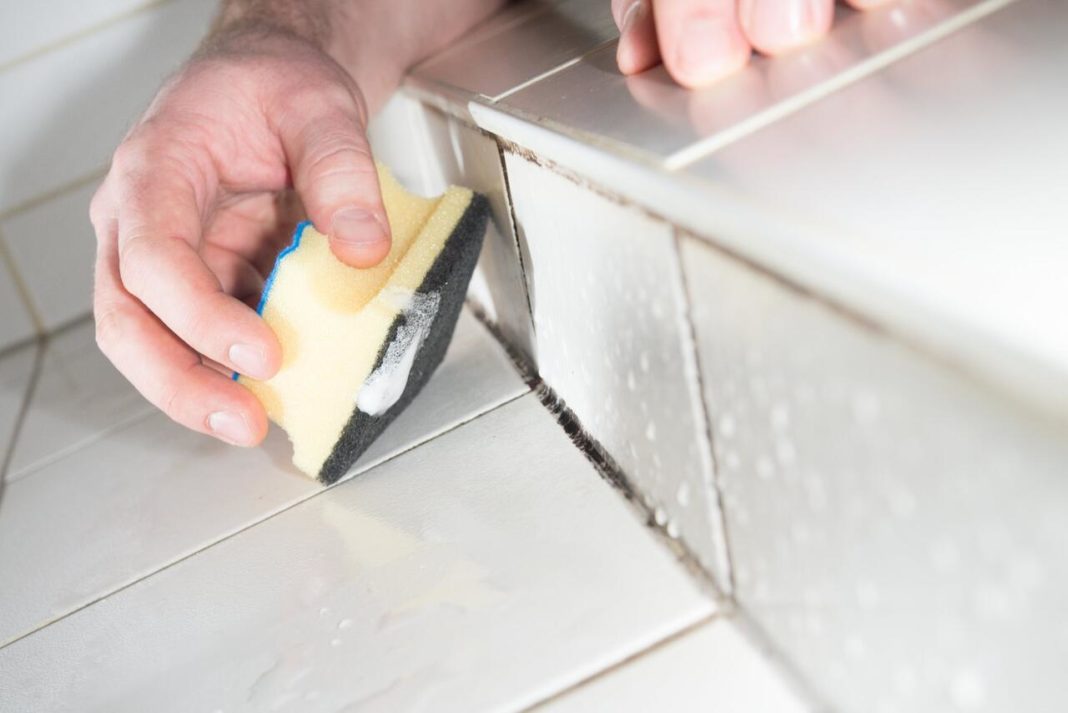
How to clean tiles after renovation
Renovation heavily pollutes any room, and this requires timely cleaning. When laying tiles, various problems can arise: paint stains, cement and soil stains, and more.
Before using cleaning agents, you need to do the following:
- Vacuum walls and floors to remove dust and small particles;
- Remove excess solid particles with a spatula;
- Rinse the surface with water.

After that, you can use folk or chemical remedies. It is recommended to use active agents, since the stains formed during the repair cannot be easily removed.
Preventive recommendations against mold growth
In order to avoid the appearance of mold, after cleaning, it is necessary to carry out preventive measures. Professionals recommend following these rules:
- Start cleaning immediately after repair so that there are no old stains;
- Matte tiles should be waxed regularly, and glossy tiles with vinegar to reduce mildew;
- Provide good ventilation, this will reduce humidity;
- After bathing or showering, dry the walls with a soft cloth.
In addition, it is recommended to regularly clean the surface to avoid the proliferation of mold spores.

Every housewife tries to keep the house clean, especially the tiles on the walls and floors. In order for the tile to be clean, shiny, without streaks, you need to regularly clean with special products at home and take preventive measures.
Video: how to clean bathroom tiles











